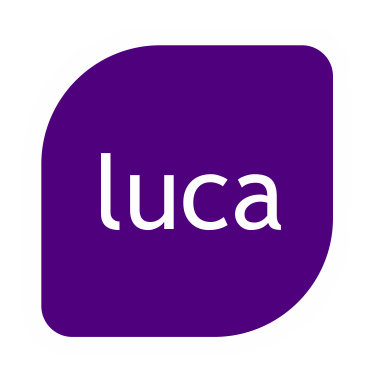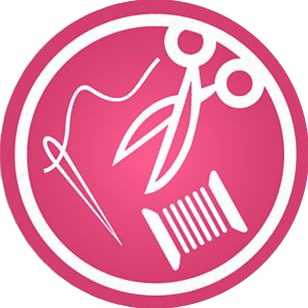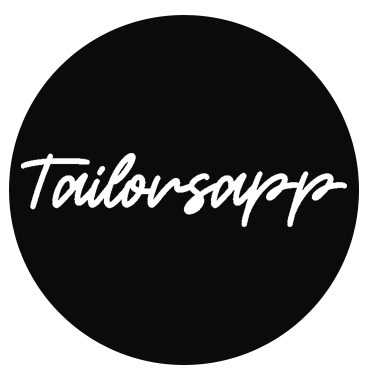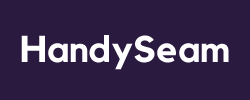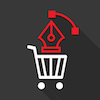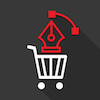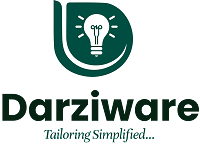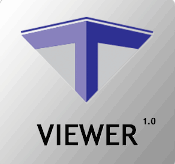What Is Tailoring Software?
Tailoring software is a specialized computer program that caters to the demands of tailors, fashion designers, and other garment industry experts. It is a digital application that allows users to conceive, design, manage, and track all components of the garment manufacturing process in an organized and effective manner. Tailoring software is fundamentally a comprehensive solution that integrates conventional tailoring techniques with cutting-edge technology.
It enables customers to digitize the whole workflow, from measuring and drafting patterns to virtual fittings and production planning. Tailors who use such software can increase production, cut expenses, and deliver high-quality tailored clothing to their clients on time. One of the most important advantages of tailoring software is its capacity to provide accurate and precise measures based on the clients' body measurements.
This eliminates the need for manual measurements, resulting in a more precise and consistent fit for each garment. Furthermore, the software enables pattern and design modification, allowing tailors to produce one-of-a-kind and bespoke outfits for their clientele. Aside from design and production, tailoring software includes tools for inventory management, order tracking, and client administration.
This allows tailors to manage resources, orders, and clients in a consolidated and orderly manner. Furthermore, the program may provide reports and analytics, allowing tailors to gain vital insights into business performance and make data-driven decisions. Some tailoring software also includes e-commerce features, allowing tailors to sell their works online straight to customers. This creates new potential for tailors to reach a larger audience and grow their businesses.
What Are The Recent Trends In Tailoring Software?
Tailoring software has advanced significantly in recent years, responding to the changing demands of the fashion industry. These advancements have paved the path for increased efficiency and precision in tailoring.
Buyers should be aware of the following current trends in tailoring software:
1. Cloud-Based Solutions: With the advent of remote work and digital solutions, cloud-based tailoring software is becoming more popular. This enables tailors to access their software and data from anywhere, at any time, making it easier to run their business and collaborate with clients.
2. Artificial Intelligence (AI) Integration: AI has made its way into the tailoring industry, streamlining processes such as pattern making and fabric cutting. This system can use customer photographs and measurements to generate personalized patterns, reducing time and increasing accuracy.
3. Virtual Fitting Rooms: Virtual fitting rooms have gained popularity in the fashion business, and some tailoring software now includes this feature. This enables clients to visually try on their custom-made items before finalizing their order, decreasing the need for alterations and ultimately increasing customer happiness.
4. Mobile Applications: As smartphones become more popular, several tailoring software companies now offer mobile applications, allowing tailors to manage their businesses while on the road. Tailors benefit from these apps, which allow them to manage appointments and handle orders more easily.
5. Integration With E-commerce Platforms: As online purchasing expands, tailoring software has been connected with popular e-commerce platforms. This enables tailors to set up an online store, display their items, and quickly manage orders and payments, making it easier to reach a bigger audience.
6. Configurable User Interfaces: Tailoring software has grown more user-friendly, with configurable interfaces that enable tailors to alter and personalize the software to their specific requirements. This improves the user experience and makes it easier for tailors to browse the many options.
Benefits Of Using Tailoring Software
Tailoring software, often known as fashion design software, is a strong tool that provides numerous advantages to anyone in the fashion or tailoring industries. Tailoring software offers various and substantial benefits, including reducing corporate operations, increasing innovation, and improving the entire client experience.
Let's explore, we will go over the primary benefits of using tailoring software so that you can make an informed decision when selecting the best software for your tailoring business.
1. Streamlined Business Processes: One of the primary benefits of employing tailoring software is that it streamlines numerous company processes, resulting in increased efficiency and effectiveness. Tailoring software, which includes inventory management, order tracking, and a client database, can assist automate and streamline numerous time-consuming processes. This not only saves time but also decreases the risk of human error, which boosts total production and profit.
2. Enhanced Creativity: Tailoring software provides a wide range of design tools and options to let you express your creativity and bring your ideas to life. With tools like digital pattern creating, 3D virtual prototyping, and design templates, you can simply experiment with numerous styles and designs to produce one-of-a-kind and customizable pieces for your consumers. This not only distinguishes your company from others, but also enables you to constantly evolve and innovate in the fast-paced world of fashion.
3. Increased Accuracy And Precision: Precision is essential in the tailoring industry, and tailoring software's accurate and detailed measurement tools can help you increase the accuracy and precision of your designs. This is especially useful for made-to-measure or bespoke tailoring because it guarantees a precise fit for your customers every time. Furthermore, the ability to save and retrieve measurements and templates streamlines the process and eliminates errors.
4. Improved Customer Experience: In today's digital environment, people expect businesses to provide a seamless and personalized experience. Tailoring software can help you do precisely that by providing features like online ordering, virtual try-ons, and real-time order status notifications. This not only enhances the overall customer experience, but also promotes customer loyalty and retention.
5. Cost Savings: Tailoring software can help you save money in the long run. You may reduce operational costs while increasing revenues by automating and optimizing corporate operations, reducing material waste, and delivering accurate measurements. Furthermore, the time saved from manual chores can be used to concentrate on areas that can increase revenue for your company.
Important Factors To Consider While Purchasing Tailoring Software?
Choosing the proper tailoring software for your company can be a key decision that affects both operations and overall success. With so many alternatives available, it can be difficult to know which is the greatest fit for your individual needs.
To assist you make an informed decision, these are the key aspects to consider when selecting tailoring software:
1. Scalability: As your company expands, your software requirements may also increase. It is critical to select software that can adapt to your changing requirements and handle a higher amount of clients, orders, and data. This will save you the time and money of upgrading to new software in the future.
2. A User-Friendly: interface is required to enable smooth operations and efficiency. Look for software with a simple and straightforward interface that is easy to use. The more user-friendly the program, the faster your employees can learn and apply it efficiently.
3. Capabilities And Customization: Tailoring software has a range of capabilities such as measurement recording, order tracking, inventory management, and more. It is critical to understand your business requirements and select software that includes the required features and customization choices to streamline your processes.
4. Integration Capabilities: Your tailoring software should be compatible with other business systems such as accounting software, e-commerce platforms, and payment gateways. This will allow you to consolidate your operations while saving time on manual data entry.
5. Security Measures: Because the program will include sensitive consumer and financial information, it must have strong security safeguards in place to protect against cyber attacks. To avoid future data breaches, use software that includes encryption, regular data backups, and secure login methods.
6. Customer Support: Technical issues or questions may develop, just as they can with any product. Choose a vendor who provides dependable and timely customer assistance to help with any issues that may arise.
7. Pricing And Budget: The cost of tailoring software varies according to the features and seller. Set a budget and explore various possibilities to see which one provides the most value within your budget.
8. Trial Period And Reviews: Before making a purchase, use the trial time to evaluate the software and its features. Additionally, read reviews from other tailoring firms to learn about their experiences and how the program has benefited their operations.
By taking these crucial elements into account, you can make an informed selection about the best tailoring software for your business. Remember to prioritize your company's needs and select software that can expand with it while maintaining efficient and productive operations.
What Are The Key Features To Look For In Tailoring Software?
When it comes to selecting the best tailoring software for your business, there are several important factors to consider. These features can significantly improve the efficiency, productivity, and profitability of your tailoring business. So, when you buy tailoring software, these are the important characteristics you should look for:
1. Measurement Management: One of the most important characteristics of tailoring software is the ability to control measurements precisely. A decent software should let you to securely track and record customer measurements, ensuring exact and consistent fitting for each garment.
2. Customization Possibilities: Each tailoring business is unique, and your software should include customization options that are tailored to your specific requirements. Look for features such as a configurable dashboard, templates, and workflows that are tailored to your specific business processes.
3. Inventory Management: Keeping track of fabrics and other resources is critical in the tailoring industry. Look for inventory management software that has functions like tracking stock levels, reordering, and issuing purchase orders to guarantee you always have the correct resources on hand.
4. Order And Customer Management: The software should let you to manage customer orders from beginning to end, including tracking orders, allocating work to personnel, and creating invoices. It should also be able to store client information for convenient retrieval and communication.
5. Appointment Scheduling: If your tailoring business accepts appointments, having a scheduling option in the software is essential. This tool helps you to manage appointments, eliminate overlaps, and send automated reminders to customers, hence reducing no-shows.
6. Mobile Accessibility: In today's digital age, having access to your business on the go is critical. Look for tailoring software that has a mobile app or is cloud-based, so you can manage your business from anywhere and at any time.
7. Integration With E-commerce Systems: If you sell your products online, tailoring software that integrates with popular e-commerce systems like as Shopify or WooCommerce allows you to manage inventory, orders, and customer information all in one place.
8. Reporting And Analytics: To make sound business decisions, you must have access to real-time data and analytics. Look for software that includes comprehensive reporting options that provide information about customer trends, sales, and inventory levels.
9. Customer Assistance: When purchasing software, it is critical to have dependable customer assistance to assist you in the event of any problems or inquiries. Look for software vendors with many support channels and a strong track record of client satisfaction.
10. Pricing: Finally, assess the total cost of the product, including setup fees, subscription plans, and any other expenditures. Make sure the software's features and advantages are worth the price.
Why Do Businesses Need Tailoring Software?
Tailoring software is a crucial tool for companies in the fashion and clothing industries. This robust program has a number of features that expedite and improve the tailoring process, making it a must-have for any business trying to boost efficiency and raise their brand. First and foremost, organizations require customizing software to streamline and accelerate their design and production processes.
Tailoring software, which includes comprehensive tools for developing and altering patterns, designing clothing, and generating cutting layouts, replaces the need for human calculations and trial and error. This not only saves time, but also decreases the possibility of errors, resulting in a higher-quality finished product. Furthermore, as the demand for custom-made and personalized clothes grows, tailoring software enables businesses to meet their clients' unique and particular wants.
The software allows you to easily establish specific measurements, add customisation options, and generate precise quotations for each item. This gives firms a competitive advantage and enables them to satisfy the expectations of an increasingly diversified and discerning consumer base. In addition, tailoring software integrates well with other business tools like inventory management and accounting software.
This enables effective tracking and control of resources, expenses, and sales, which improves overall business operations and allows for more informed decision-making. Tailoring software can also increase communication and collaboration inside a firm. The program improves team cooperation by centralizing all design, production, and communication responsibilities on a single platform, reducing the chance of miscommunication or information loss.
Finally, in the digital age, having an online presence is critical for any company. Tailoring software enables firms to create an e-commerce platform where clients can design, order, and purchase custom-made clothes. This broadens their reach and consumer base, providing another revenue stream for their company.
How Much Time Is Required To Implement Tailoring Software?
The time required to implement tailoring software varies depending on several factors. These criteria include the type and complexity of the software, the size and structure of the firm, and any existing systems and processes. On average, the implementation procedure can last from a few weeks to several months. Before delving into the timeline, it is critical to have a thorough understanding of the implementation process.
The first stage is to undertake a detailed needs analysis to identify the business's particular objectives and goals. This step is critical because it lays the groundwork for the remainder of the implementation process. Next, the program must be adjusted to meet the specific demands of the company. This may include building and setting templates, workflows, and reporting to expedite procedures and ensure smooth connection with existing systems.
The time required for this stage varies according to the software's complexity and level of customization. Once the customisation is completed, the software must be tested to ensure that it functions properly and fits the demands of the organization. This testing step can last several weeks to ensure that all features work effectively and that any necessary tweaks are done. Finally, the program is ready to be deployed throughout the organization. This includes training personnel, moving data from legacy systems, and ensuring a smooth transition. The duration of this phase is mostly determined by the organization's size and the complexity of the data migration.
What Is The Level Of Customization Available In Tailoring Software
The level of customisation possible for software varies by package. Some software provides basic customization choices, while others have more extensive and intricate functionality. Before making a purchase, buyers should understand the level of customisation offered in the product. The type of software used has an impact on the level of customization. Tailoring software packages can be standalone or integrated into a broader business management system.
Standalone software often provides more customization choices because it is completely focused to tailoring tasks. However, because integrated systems focus on several areas of corporate management, they may have drawbacks. The aim of the modification is also an important consideration. Some applications may allow you to alter the user interface and layout to your liking. This can help to increase efficiency and make the software more user friendly.
Other programs may have options for creating and preserving patterns, design templates, and grading sizes. These capabilities can considerably increase the software's versatility and customisation. In addition, the extent of customization may be determined by the software's target audience. Some programs are intended for amateur tailors, while others are geared for professional tailors and fashion designers.
Professional-grade software typically offers more customization, including advanced features like 3D rendering and virtual fitting. It is also necessary to examine the complexities of the customisation procedure. Some software may require coding or technical expertise to make changes, but others provide user-friendly customization options that allow for simple personalization. Furthermore, the level of support and resources available from the software supplier might influence the degree of customization.
Which Industries Can Benefit The Most From Tailoring Software?
Tailoring software is a powerful tool that may transform the way firms function, notably in the fashion and textile industries. Its advanced features and configurable options make it an excellent choice for a variety of businesses.
Let's explore, we'll look at which sectors can gain the most from employing tailoring software.
1. Fashion Design And Manufacturing Industry: Tailoring software transforms the fashion design and manufacturing industries. It enables designers to develop and save digital versions of their designs, so making the design process more efficient and simplified. Fashion businesses can save time and money by using custom software to swiftly create digital patterns, grade them, and generate markers. It also allows them to monitor inventory levels and simply create and handle orders.
2. Custom Clothes Industry: Tailoring software is ideal for companies that specialize in custom clothes, such as made-to-order or bespoke services. These businesses may use the software to save customer measurements, track orders, and even create personalized designs for each customer. This not only improves the consumer experience, but also the general efficiency of the organization.
3. Alteration And Tailoring Shops: Tailoring software is quite useful for alteration and tailoring shops. With its simple interface and centralized database, these organizations can rapidly enter and track client information, handle adjustments and repairs, and create invoices. It also allows them to store consumer preferences and track previous orders, creating a tailored experience for their customers.
4. E-commerce And Online Retailers: Tailoring software is an essential tool for e-commerce and online retailers who sell custom or made-to-order apparel. It enables them to simply manage and track orders, create and save bespoke patterns, and provide tailored options to clients. It also allows them to streamline their production process, which saves time and resources on special orders.
5. Textile And Fabric Manufacturing Industry: Tailoring software can be used to create and store digital versions of fabric designs, saving time and resources. It also helps firms to digitize their cutting and weaving processes, resulting in increased precision and reduced human error. Overall, tailoring software can help textile and fabric businesses increase their efficiency and output.
Conclusion
Tailoring software is essential for updating and optimizing garment and apparel enterprises. Whether it's a tiny tailoring shop or a huge fashion house, this specialist software streamlines operations by handling measurements, customer orders, design catalogs, inventory, billing, and delivery schedules. It improves accuracy, decreases manual errors, and increases customer happiness by providing a consistent experience from order placing to delivery.
Tailoring software, which includes customization possibilities, cloud integration, and mobile accessibility, not only improves business operations but also assists tailor enterprises in remaining competitive in a rapidly changing fashion sector. Investing in the appropriate tailoring software is no longer a choice; it's a strategic move toward increased efficiency, growth, and outstanding service.


